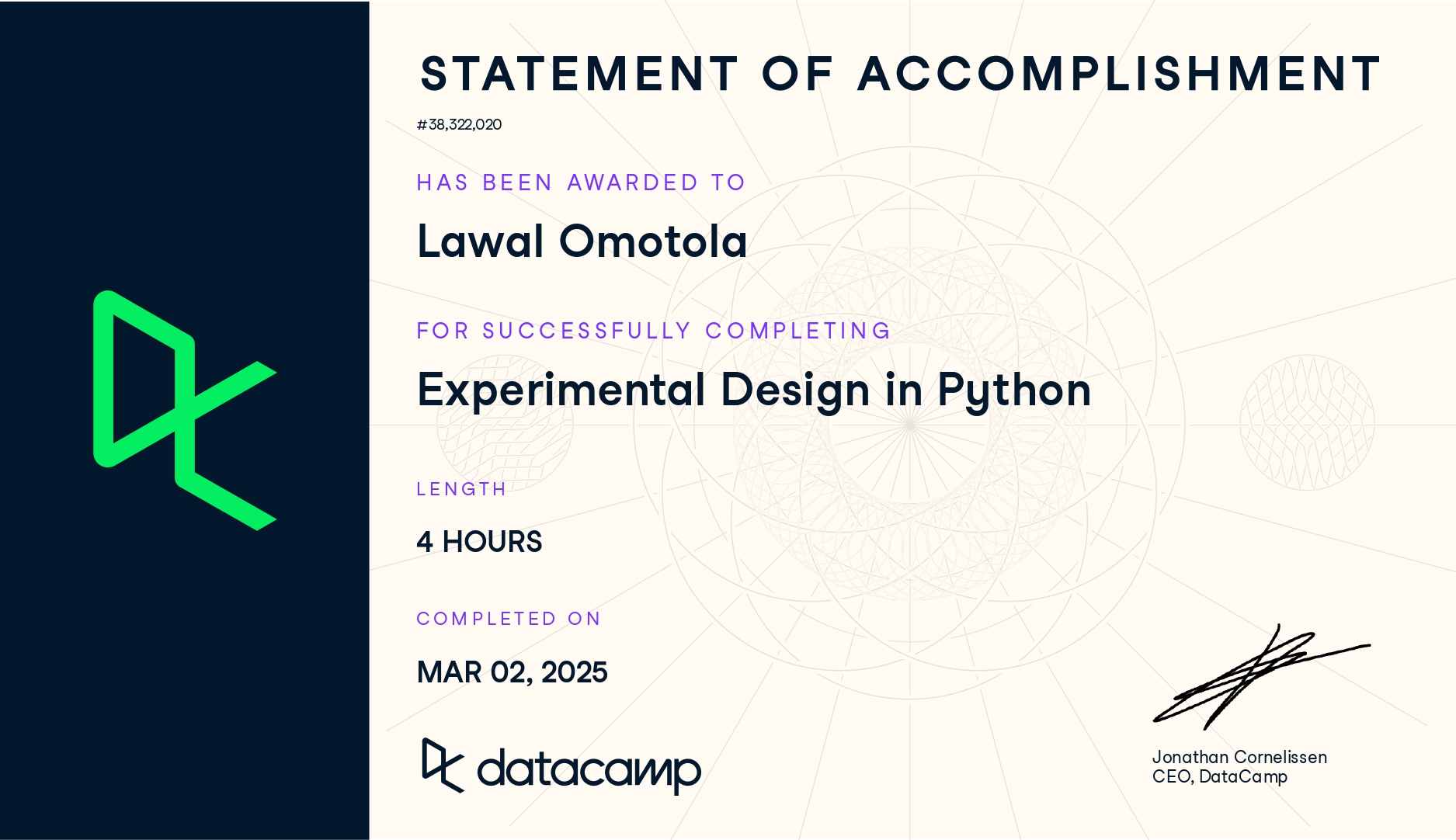
Building expertise in experimental design has equipped me with the analytical tools to rigorously test hypotheses and quantify risks in my work.
My journey began with understanding the fundamentals of experimental design, including different setups like blocking and stratification, as well as the application of visual and analytical tests for normality in experimental data.
I then delved into advanced experimental design techniques, focusing on factorial designs, randomized block designs, and covariate adjustments to enhance the accuracy and reliability of experiments.
Along the way, I mastered essential statistical tests, including t-tests, ANOVA, and Chi-Square, while also exploring post-hoc analyses and power analysis to determine optimal sample sizes and effect sizes. This allowed me to confidently select the right tests, interpret p-values, and minimize errors in my analyses.
In tackling the complexities of experimental data analysis, I applied tools like pandas for data manipulation, addressed challenges like heteroscedasticity using scipy.stats, and leveraged non-parametric tests such as the Mann-Whitney U test. Additionally, I explored techniques for data transformation, visualization, and interpretation, strengthening my ability to conduct robust, real-world analyses across various experimental settings.
This learning experience has deepened my ability to design, analyze, and interpret experiments with precision, preparing me to drive data-informed decision-making in diverse applications.
Click here for details.